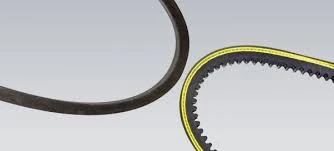- Arabic
- French
- Russian
- Spanish
- Portuguese
- Turkish
- Armenian
- English
- Albanian
- Amharic
- Azerbaijani
- Basque
- Belarusian
- Bengali
- Bosnian
- Bulgarian
- Catalan
- Cebuano
- Corsican
- Croatian
- Czech
- Danish
- Dutch
- Afrikaans
- Esperanto
- Estonian
- Finnish
- Frisian
- Galician
- Georgian
- German
- Greek
- Gujarati
- Haitian Creole
- hausa
- hawaiian
- Hebrew
- Hindi
- Miao
- Hungarian
- Icelandic
- igbo
- Indonesian
- irish
- Italian
- Japanese
- Javanese
- Kannada
- kazakh
- Khmer
- Rwandese
- Korean
- Kurdish
- Kyrgyz
- Lao
- Latin
- Latvian
- Lithuanian
- Luxembourgish
- Macedonian
- Malgashi
- Malay
- Malayalam
- Maltese
- Maori
- Marathi
- Mongolian
- Myanmar
- Nepali
- Norwegian
- Norwegian
- Occitan
- Pashto
- Persian
- Polish
- Punjabi
- Romanian
- Samoan
- Scottish Gaelic
- Serbian
- Sesotho
- Shona
- Sindhi
- Sinhala
- Slovak
- Slovenian
- Somali
- Sundanese
- Swahili
- Swedish
- Tagalog
- Tajik
- Tamil
- Tatar
- Telugu
- Thai
- Turkmen
- Ukrainian
- Urdu
- Uighur
- Uzbek
- Vietnamese
- Welsh
- Bantu
- Yiddish
- Yoruba
- Zulu
Kas . 16, 2024 17:59 Back to list
Variable Speed Belts for Enhanced Efficiency and Performance in Various Applications
Understanding Metric Variable Speed Belts A Comprehensive Overview
In today's fast-paced industrial environment, efficiency and adaptability are paramount. One of the most revolutionary components facilitating such improvements in various machinery is the metric variable speed belt. These belts play a crucial role in a wide range of applications, from manufacturing to automotive systems, owing to their ability to transmit power effectively while allowing for speed variation.
What Are Metric Variable Speed Belts?
Metric variable speed belts, often made of durable materials such as rubber or polyurethane, are designed to handle fluctuating loads and provide a range of speed options. Unlike traditional fixed-speed belts, these are adjustable, enabling machines to operate under different conditions without the need for constant reconfiguration. This flexibility is particularly significant in scenarios where the operational requirements can change rapidly.
The Mechanics Behind Variable Speed Operation
At the core of the variable speed concept is the capability to modify the tension and position of the belt on pulleys. By adjusting these parameters, users can change the speed at which the driven components operate. This mechanism not only optimizes performance but also enhances energy efficiency, which is a critical factor in today's conservation-focused industry. With reduced energy consumption, businesses can lower operational costs while minimizing their environmental footprint.
Applications in Various Industries
metric variable speed belts

Metric variable speed belts find their applications across diverse sectors. In the manufacturing industry, they are utilized in conveyor systems where varying speeds can streamline production processes and improve throughput. In the automotive sector, these belts are integral to the function of devices like continuous variable transmissions (CVTs), allowing for smoother acceleration and better fuel efficiency.
Moreover, in the HVAC industry, these belts can adjust fan speeds based on real-time demands, leading to improved energy savings and enhanced comfort. The ability to cater to specific requirements also means that firms can maintain equipment longevity, reducing maintenance costs associated with wear and tear.
Advantages of Using Metric Variable Speed Belts
The benefits of metric variable speed belts extend beyond operational flexibility. Firstly, they contribute to better performance tuning, allowing businesses to adapt machinery quickly for different tasks without significant downtime. Secondly, these belts are designed for longevity, minimizing the frequency of replacements and the associated costs. Lastly, with advancements in technology, modern metric variable speed belts are engineered to reduce noise and vibration, enhancing the comfort of operational environments.
Conclusion
In summary, metric variable speed belts represent a significant advancement in power transmission technology. Their ability to provide adjustable speed in a wide range of applications not only boosts efficiency but also aligns with contemporary industry demands for sustainability and cost-effectiveness. As industries continue to evolve, the role of these versatile belts will undoubtedly become even more pivotal in driving innovation and enhancing productivity.
-
Premium Timing Belt Factory | AI-Optimized Solutions
NewsAug.02,2025
-
Premium Custom V Belts Enhanced with GPT-4 Turbo AI
NewsAug.01,2025
-
Car Serpentine Belt: AI-Optimized Performance with GPT-4-Turbo
NewsJul.31,2025
-
Heat Joining Drive Belt | High-Durability Fusion Solution
NewsJul.31,2025
-
Timing Belt Video Guide: Selection, Design & Quality Insights
NewsJul.30,2025
-
High-Performance Variable Speed V Belt Drive for Efficient Power Transmission
NewsJul.30,2025

